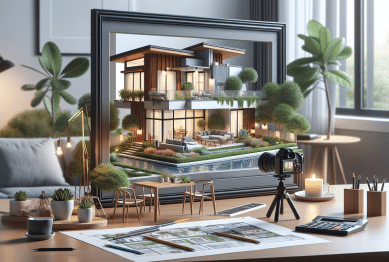Curious about the rise of tiny homes and affordable housing solutions? This guide unpacks key reasons behind the popularity surge, examining zoning, financing, and the changing preferences that are shaping how people find places to live.
Understanding the Modern Tiny Home Movement
Tiny homes have garnered attention as both a lifestyle trend and a practical response to modern housing challenges. Increasing costs in traditional real estate markets have motivated entrepreneurs and homeowners to explore smaller, more sustainable living solutions. These compact dwellings, often ranging from 100 to 400 square feet, offer financial flexibility and freedom from high monthly payments. Many people value the chance to simplify their lives while reducing ongoing expenses and carbon footprints. The shift toward minimalism and efficient living spaces helps explain why tiny homes are gaining a foothold in suburbs and cities alike. People are no longer only searching for large single-family houses; they are looking at alternative options that meet practical needs and personal values.
There’s more to it than just saving money. Tiny homes create possibilities for individuals who may be priced out of conventional housing, including young adults, retirees, and singles. Many developers note a growing interest among those who wish to own property without incurring decades of mortgage debt. Flexibility is another core appeal. Some buyers use these homes as secondary spaces—guesthouses, rental units, or vacation retreats—while others make them their full-time residence. With flexible zoning and thoughtful urban planning, tiny homes are even becoming part of broader affordable housing initiatives.
Within urban and suburban regions, advocates argue that tiny homes provide a way to address housing shortages without requiring new high-rise construction or vast suburban sprawl. They are easily adaptable to underutilized lots and formerly vacant spaces. Innovative companies are designing models that comply with local building codes, while communities experiment with supportive regulations. Many households are learning that by embracing tiny home living, they can foster a greater sense of autonomy and community at the same time.
Zoning Laws and Legal Challenges Impacting Tiny Homes
Zoning requirements and legal regulations significantly affect where and how tiny homes can be placed. In much of the United States, traditional housing laws were written before the tiny home movement existed. These codes often specify minimum square footage and building requirements that tiny dwellings may not meet. As a result, it’s common to find stories about would-be tiny house owners facing obstacles from local governments. However, advocacy efforts have led to policy changes in various cities and counties. Adjusting zoning ordinances to permit these properties helps expand housing options for more residents.
Some municipalities now recognize tiny houses as accessory dwelling units (ADUs), making it easier for homeowners to add small living quarters on their property. Others have introduced pilot projects or designated zones where tiny homes are specifically allowed. Local governments are beginning to see how embracing the trend can help alleviate homelessness and diversify the available housing stock. Urban planners point to the flexibility of these structures as a method to infill unused land and reduce housing insecurity. The growing acceptance of tiny homes mirrors evolving attitudes about what constitutes a suitable dwelling.
For those interested in joining the movement, navigating zoning and building codes remains a critical step. It’s helpful to research local ordinances thoroughly or consult with a real estate professional who understands area regulations. Opposition sometimes arises from neighbors or homeowner associations, mainly due to concerns about property values and neighborhood composition. Building awareness and fostering dialogue can ease tensions and pave the way for new kinds of housing solutions. As these projects prove their value, more regions may update zoning, giving tiny homes a bigger role in modern housing conversations.
Financing and Affordability Strategies for Tiny Home Ownership
Financing a tiny home isn’t always straightforward. Traditional mortgages often don’t apply to homes under a certain size or that are built on wheels. Instead, buyers may use personal loans, RV loans, or unconventional lenders who specialize in these compact dwellings. Despite these challenges, the overall cost of a tiny home is usually much lower than that of larger properties. Carefully assessing upfront expenses, including land, permits, and construction, helps careful buyers stay within their budgets.
For many, the lower price tag means more attainable home ownership—even for those with modest incomes. Some nonprofit organizations and community groups assist with financing or offer land-leasing arrangements to help people get started. Government-backed programs in select regions may even include grants or low-interest loans aimed at increasing affordable housing opportunities through alternative designs. Buyers who are self-motivated often enjoy the satisfaction of building a home with individualized features while reaping financial rewards for years to come.
There’s also an emerging market for pre-fabricated or modular tiny homes, which can be delivered ready to assemble. These options provide upfront pricing transparency and may work with specialized lenders who understand the nuances of these dwellings. Learning more about different financing possibilities and seeking advice from experienced owners or real estate agents can help prospective buyers overcome financial barriers. Having a clear understanding of your region’s options can turn the dream of attainable housing into reality.
Tiny Home Living: Lifestyle Benefits and Community Impact
Adopting a tiny home lifestyle frequently leads to significant lifestyle changes. Those living in smaller spaces tend to become more intentional about possessions, routines, and relationships. Many tiny homeowners celebrate how the arrangement encourages decluttering, organization, and focus on essentials rather than excess. This ethos resonates with growing numbers of people eager to reduce their environmental impact and simplify daily life. Downsizing brings benefits such as easier maintenance, lower utility bills, and the chance to live in more desirable or close-knit neighborhoods.
The ripple effects go beyond individual households. Tiny home communities are springing up across the country, creating new opportunities for affordable, cooperative living. These neighborhoods encourage interaction between residents and often feature shared green spaces, gardens, and amenities. The resulting sense of belonging can be especially important for those who value connection as much as privacy. By participating in a community of like-minded individuals, residents can swap ideas, share resources, and help one another navigate challenges unique to small-space living.
From multigenerational families to retirees and urban professionals, the adaptability of tiny homes attracts a wide demographic. As more people experiment with this lifestyle, they discover ways to tailor designs to various needs—home offices, accessible features, and guest accommodations included. Ultimately, the movement offers a path to personal fulfillment that goes hand-in-hand with stewardship of resources and active participation in vibrant local communities.
Design Innovations Making Tiny Homes Possible
One vital factor in the widespread acceptance of tiny homes is innovative design. Architects and developers have risen to the challenge, creating floor plans that balance comfort, function, and visual appeal in compact footprints. Clever storage solutions, convertible furniture, and multi-purpose areas are now standard. Large windows, skylights, and open layouts make interiors feel larger and brighter, defying their size on paper. The efficiency of these designs appeals to anyone seeking a low-maintenance lifestyle without sacrificing style or livability.
Sustainability is another driving force behind many tiny home innovations. Energy-efficient appliances, solar panels, and water-saving fixtures are increasingly easy to integrate. Builders are using reclaimed or eco-friendly materials, reducing both initial environmental impact and ongoing operational costs. Some communities encourage net-zero homes—structures that generate as much energy as they use—by offering incentives for green building techniques. These advances not only appeal to eco-conscious buyers but also help communities meet sustainability goals.
Modular and prefab construction models have made it simpler for buyers to access a wide range of personalized options, even on shorter timelines. This helps reduce barriers to ownership and allows for easy upgrades or expansions as needs evolve. Design continues to evolve, integrating technology like smart-home systems and space-saving appliances that further enhance quality of life. As these trends continue, expect even more creative solutions making tiny living accessible to a broader audience.
Future Trends in Affordable Housing and Urban Development
Tiny homes are just one aspect of a larger shift in the way housing is conceived and delivered. Experts believe micro-apartments, ADUs, and other compact dwellings will play increasing roles as populations grow and urban areas become more dense. Local governments and urban planners are exploring ways to develop neighborhoods that feature increased affordability and diversity while preserving character and community.
Recent economic shifts, environmental concerns, and changing preferences are pushing innovation in housing design and development. Policymakers are recognizing the need for flexible regulations that accommodate nontraditional housing in both urban and rural environments. By rethinking land use policy and incentivizing creative solutions, cities are striving to combat housing shortages and serve wider populations. Affordable prefab and modular designs are making it possible to adapt older neighborhoods without major disruption.
Ultimately, the future of affordable housing will depend on collaboration between homeowners, designers, government agencies, and community groups. Keeping inclusivity, sustainability, and practicality at the forefront promises to unlock new ways for people to live independently, comfortably, and within their means. Tiny homes are paving the way for these changes, opening doors to homeownership for millions and contributing to more flexible community planning.
References
1. United States Department of Housing and Urban Development. (n.d.). Accessory Dwelling Units (ADUs). Retrieved from https://www.huduser.gov/portal/pdredge/pdr-edge-featd-article-012022.html
2. National Association of Realtors. (n.d.). Tiny Homes: A Practical Housing Solution? Retrieved from https://www.nar.realtor/magazine/real-estate-news/tiny-homes-a-practical-housing-solution
3. American Planning Association. (n.d.). Tiny homes, big ideas: Innovations in housing policy. Retrieved from https://www.planning.org/planning/2019/sep/tinyhomes.htm
4. Urban Land Institute. (n.d.). The Rise of Tiny Houses and Micro Units. Retrieved from https://americas.uli.org/urbanland/industry-sectors/residential/the-rise-of-tiny-houses-and-micro-units/
5. AARP. (n.d.). The ABCs of ADUs. Retrieved from https://www.aarp.org/livable-communities/housing/info-2019/accessory-dwelling-units-adus.html
6. Habitat for Humanity. (n.d.). Affordable Housing and Tiny Homes. Retrieved from https://www.habitat.org/stories/how-small-houses-can-help-affordable-housing









